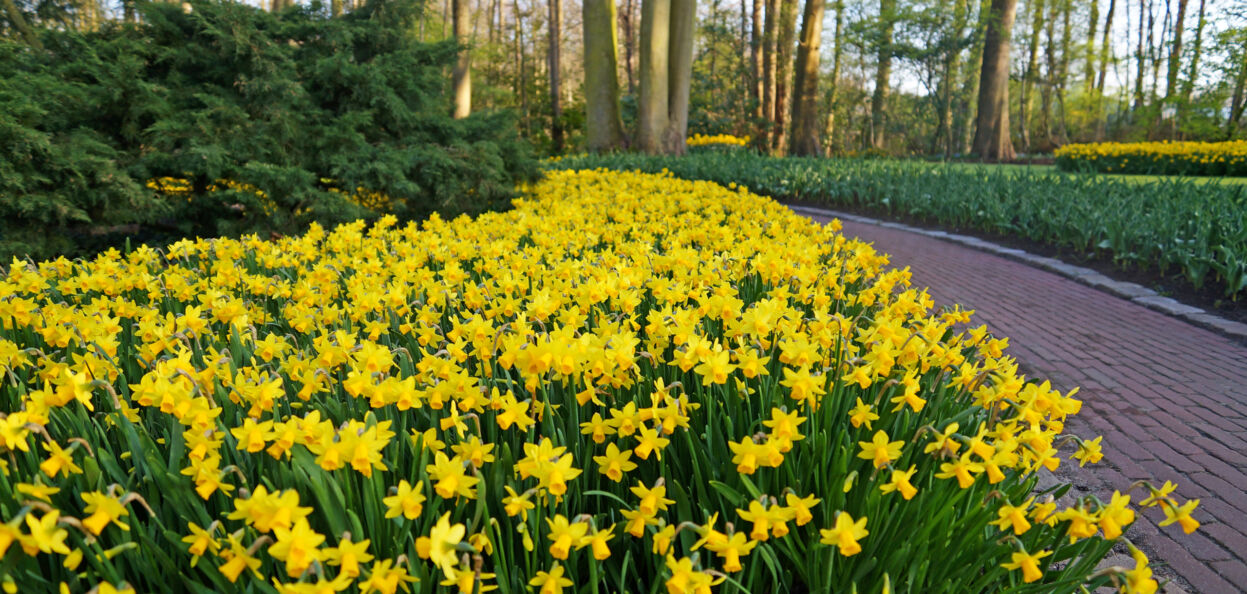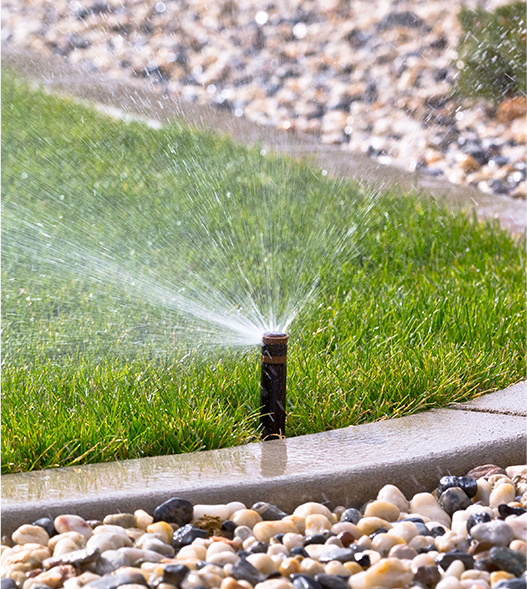We love designing and planting spring gardens for our clients. Spring flowering bulbs are a delightful addition to any garden, bringing vibrant colors and life after the dormancy of winter. Popular varieties include tulips, daffodils, hyacinths, and crocuses, each offering unique hues and forms.
These bulbs typically planted in the fall, allowing them to establish roots before the ground freezes. As temperatures warm in early spring, they burst into bloom, creating a spectacular display that can last several weeks.
Spring bulbs thrive in well-drained soil with good sunlight and require minimal maintenance once planted – having said that, we can tailor plantings to suit pretty much every soil type we encounter. They can be used in various garden settings, from formal flower beds to naturalized woodland areas.
Additionally, many bulbs can be left in the ground to naturalize, multiplying over the years for an ever-expanding display. With their early-season blooms, spring flowering bulbs are a symbol of renewal and a joyful harbinger of the gardening season.
We tend not to use many tulips as tulips seem to be the favoured food of squirrels. And squirrels abound in our area. Having said that, we love using a species tulip called Tulip tarda, Woodland Tulip or Late Tulip.
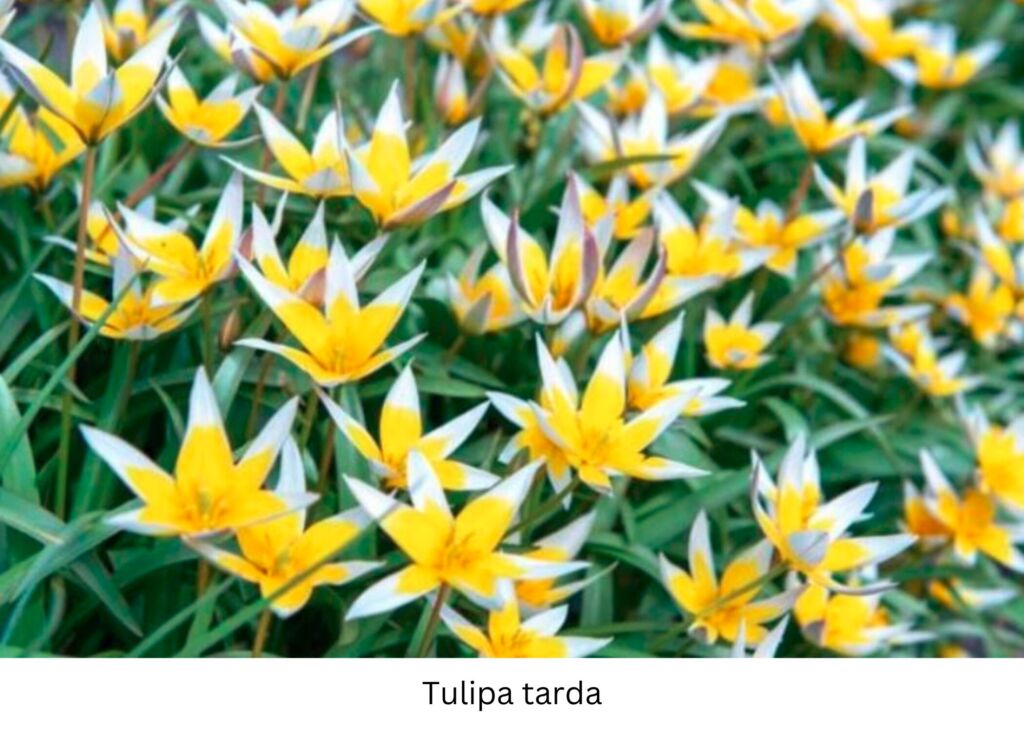
Some of the more common bulbs:
Narcissus or Daffodils
Daffodils are vibrant spring flowers known for their bright yellow petals and trumpet-shaped corona. Scientifically called Narcissus, they symbolize renewal and new beginnings. Native to Europe, these perennials thrive in temperate climates and are often among the first flowers to bloom as winter ends.
Daffodils are easy to grow, requiring minimal care, and they spread over time, creating cheerful clusters. They are popular in gardens and floral arrangements for their beauty and resilience.
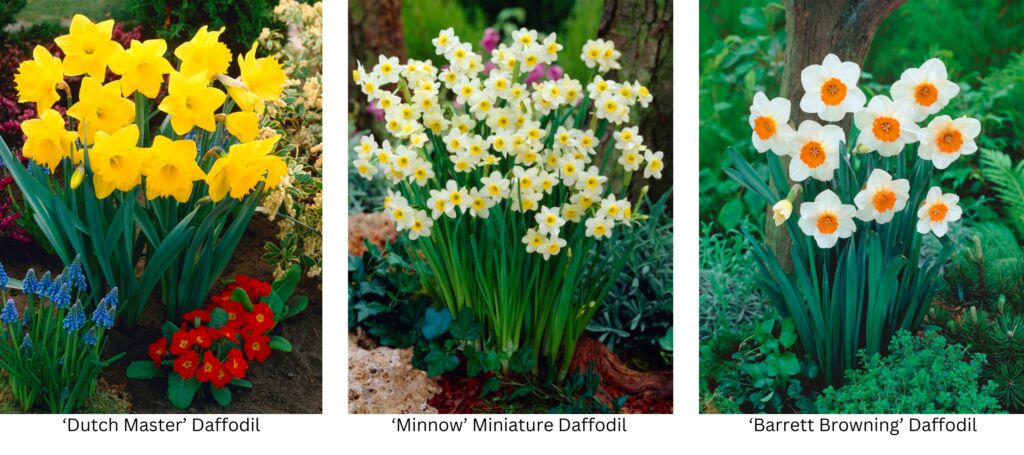
Hyacinths
Hyacinths are fragrant spring flowers renowned for their dense, spiky clusters of blooms in various colors, including blue, pink, white, and purple. Native to the Mediterranean region, these perennials belong to the asparagus family, believe it or not! Their strong, sweet scent and striking appearance make them a favorite.

Crocus
Crocuses are early-blooming perennials known for their cup-shaped flowers that emerge in late winter or early spring. Belonging to the iris family, these hardy plants are native to Europe, North Africa, and Asia. Crocuses come in a variety of colors, including purple, yellow, and white, often providing the first splash of color after winter. They are a popular choice for gardens, rockeries, and naturalized lawns.
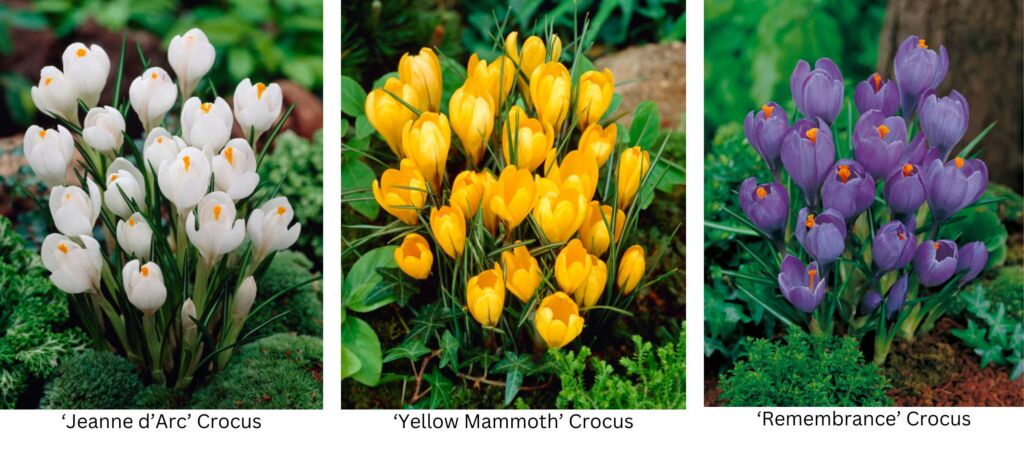
Snowdrops
Snowdrops are delicate, early spring flowers known for their nodding, white, bell-shaped blooms. They are native to Europe and the Middle East. These hardy perennials often emerge through snow, symbolizing hope and the end of winter. Snowdrops are ideal for woodland gardens and borders. Their subtle beauty and resilience make them a cherished sight in late winter.
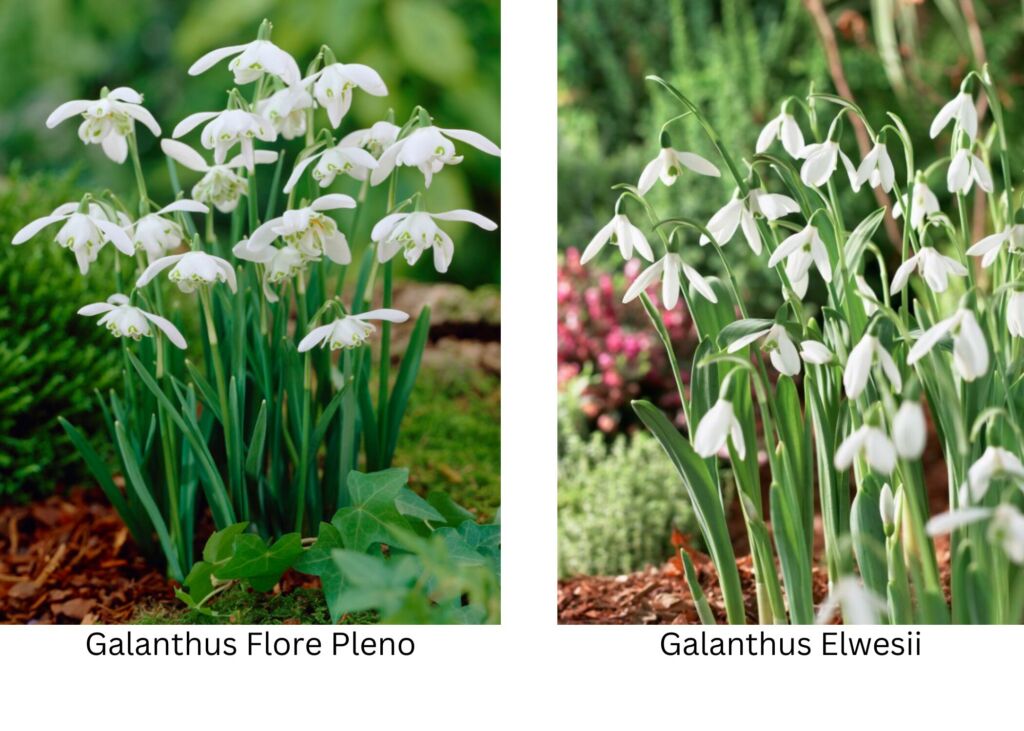
Some of the lesser known but wonderful bulbs we like. These are sometimes referred to as:
Specialty Bulbs
Giant Onion
Giant flowering allium, or Allium giganteum, is a striking perennial known for its large, spherical clusters of tiny star-shaped flowers. Typically blooming in late spring to early summer, these flowers come in shades of purple and pink. Native to Central Asia, they belong to the Amaryllidaceae family. With tall, sturdy stems reaching up to 4 feet, giant alliums make a bold statement in gardens. They attract pollinators and add architectural interest.
There are many different types of flowering allium.
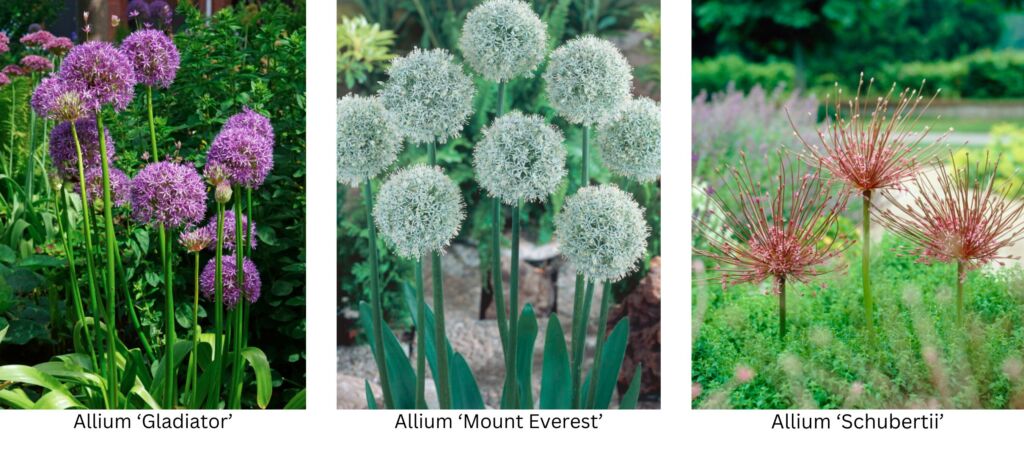
Anemone
Anemone blanda, commonly known as Balkan Amenone, or just Anemone, is a charming spring-blooming perennial that produces daisy-like flowers in shades of blue, pink, and white. These low-growing plants are native to southeastern Europe and the Middle East. Perfect for rock gardens, borders, and woodland settings. Anemone blanda’s cheerful blooms and fern-like foliage add a splash of early color to the garden.
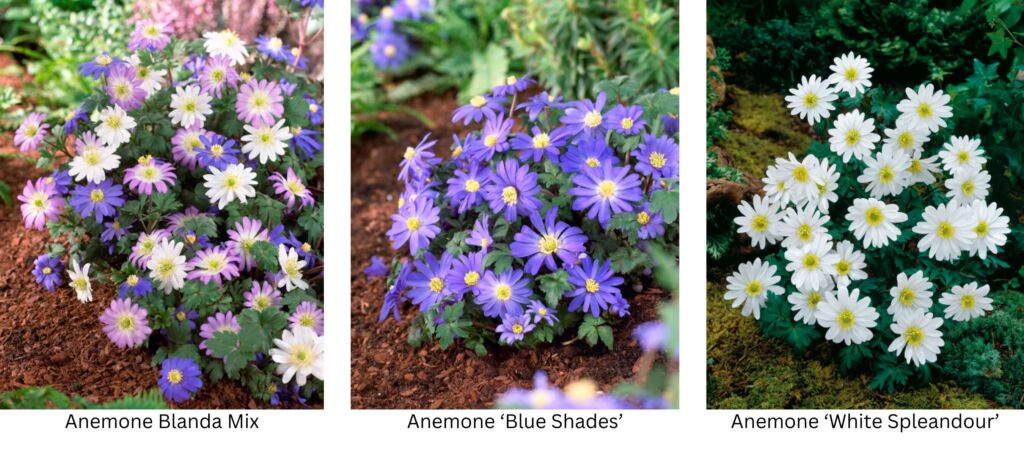
Camassia
Camassia, also known as camas or quamash, is a North American native perennial known for its tall spikes of star-shaped flowers in blue, purple, or white. Blooming in late spring, these resilient plants belong to the Asparagus family. They are ideal for naturalizing in meadows and garden borders. Camassia’s striking blooms attract pollinators and add a touch of wild beauty to any landscape.
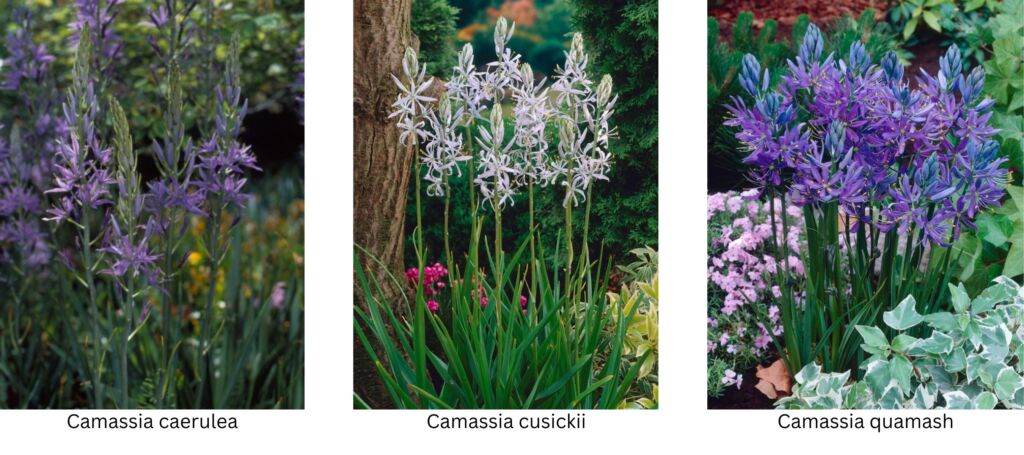
Chionodoxa
Chionodoxa, commonly known as glory-of-the-snow, is a charming spring-blooming bulb that produces star-shaped flowers in shades of blue, pink, or white. Native to the eastern Mediterranean, these small, hardy plants belong to the asparagus family. They often naturalize in lawns, rock gardens, and woodland areas. Chionodoxa’s early blooms add a burst of color to the garden, signaling the end of winter and the arrival of spring.
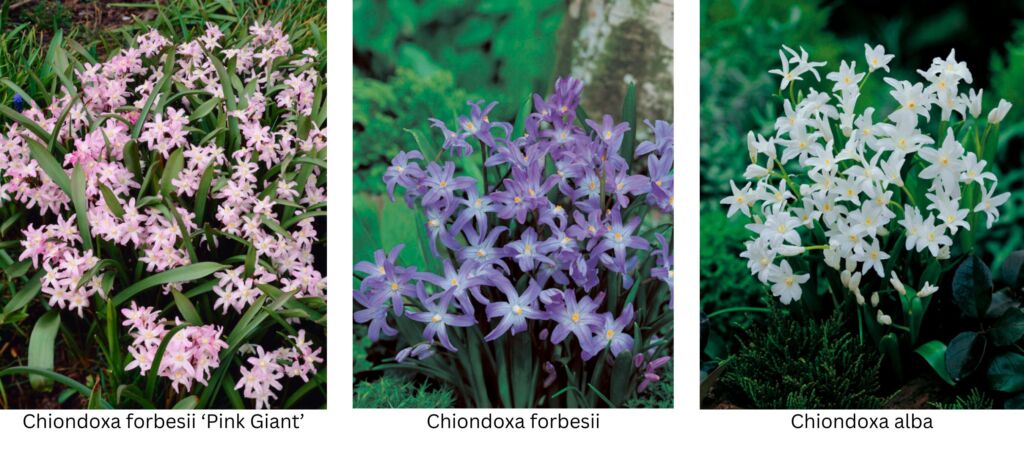
Corydalis
Corydalis is flowering plant in the poppy family., known for its delicate, tubular flowers and fern-like foliage. Native to temperate regions of the Northern Hemisphere, these plants thrive in woodland gardens and shaded areas. The flowers come in various colors, including pink, blue, and yellow. Corydalis is valued for its ornamental appeal and medicinal properties, particularly in traditional Chinese medicine, where it is used for pain relief and promoting circulation.
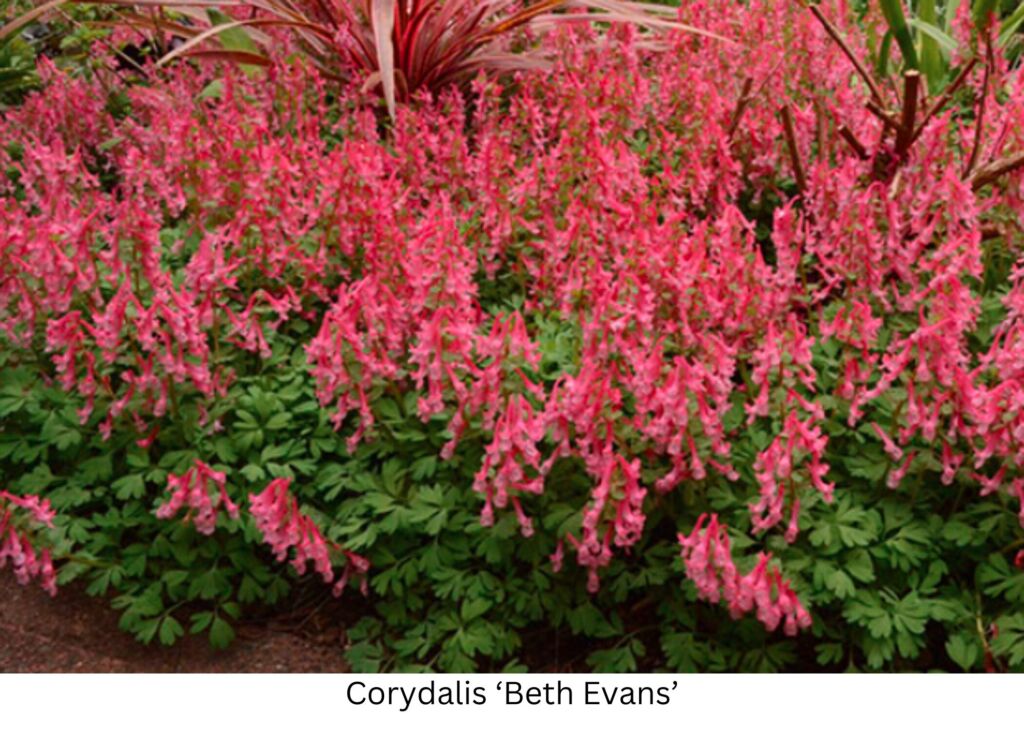
Eranthis
Eranthis, commonly known as winter aconite, is a flowering plants in the buttercup family. Native to Europe and Asia, these early bloomers are among the first to flower in late winter or early spring, often while snow is still on the ground. They produce bright yellow, cup-shaped flowers above dark green, lobed leaves. Eranthis prefers well-drained, humus-rich soil and partial shade, making it a charming addition to woodland gardens. It naturalizes well in lawns.
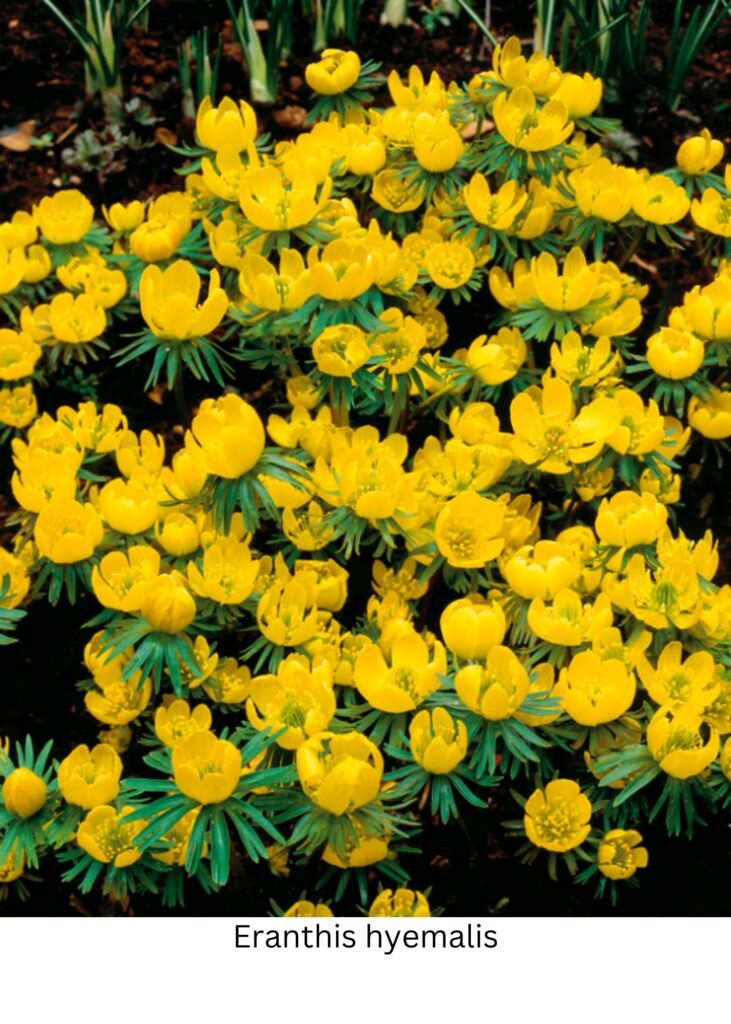
Checkered Fritillaria
Checkered Fritillaria is a distinctive perennial in the lily family. Native to Europe, it features unique, bell-shaped flowers with a checkered pattern of purple and white. Blooming in spring, the flowers nod gracefully on slender stems above narrow, grass-like leaves. Checkered Fritillaria is often found in meadows and woodlands, adding an enchanting touch to naturalistic gardens.
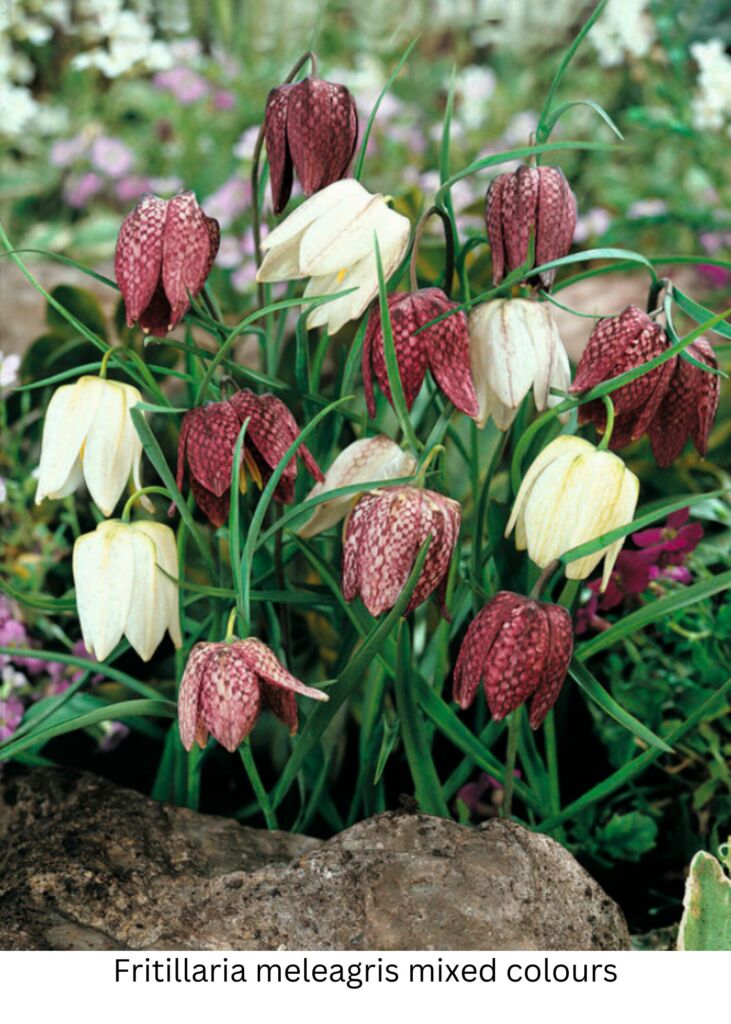
Ipheion
Ipheion, is commonly known as spring starflower. Native to South America, these hardy perennials are cherished for their star-shaped, fragrant flowers, which appear in early spring. The blooms, typically in shades of blue, white, or violet, rise above slender, grass-like leaves. Ipheion is a delightful addition to rock gardens, borders, and woodland settings.
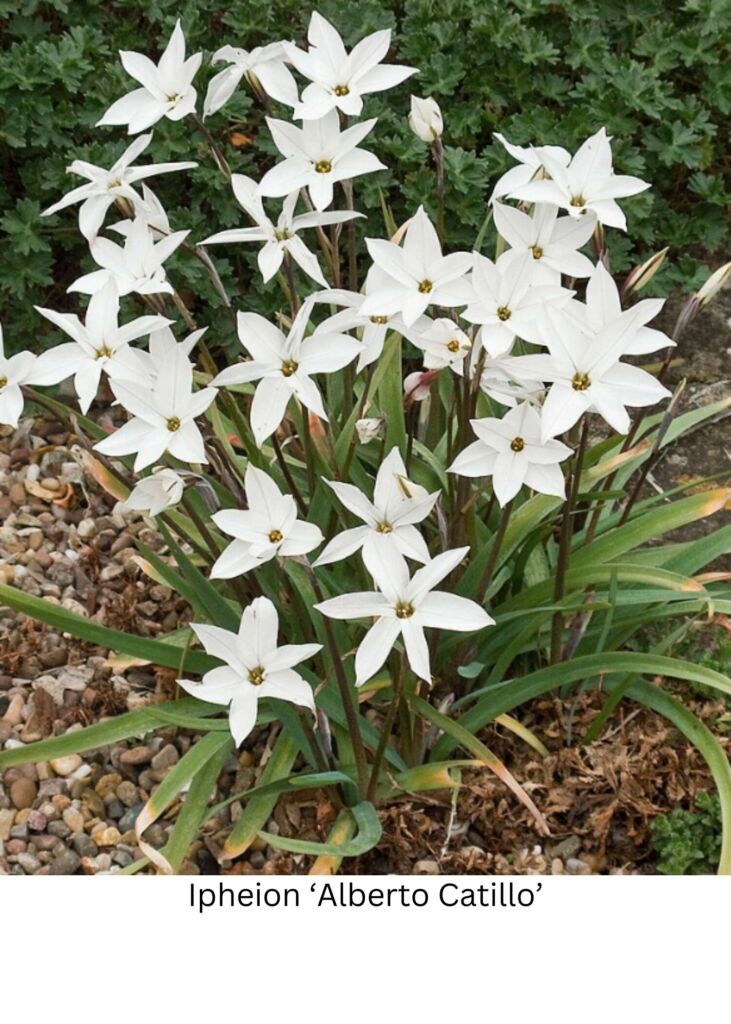
Iris
Iris reticulata is a dwarf iris species known for its early spring blooms and striking appearance. Native to Russia, the Caucasus, and Northern Iran, it features vivid blue, purple, or yellow flowers with intricate markings and a pleasant fragrance. The flowers rise on slender stems above narrow, grass-like leaves. Iris reticulata is ideal for rock gardens, borders, and containers, adding vibrant color to late winter and early spring landscapes.
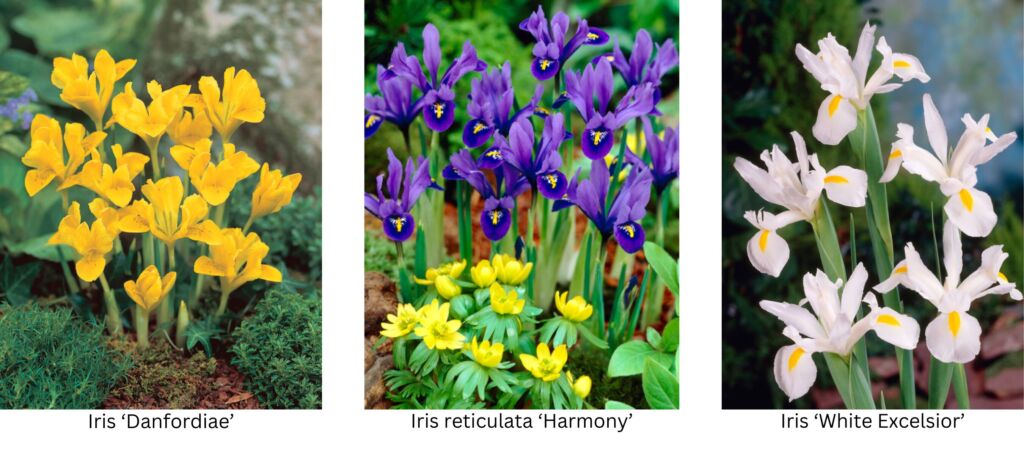
Leucojum
Leucojum is native to Europe and the Mediterranean region, these perennials produce nodding, bell-shaped white flowers with green or yellow tips in spring and summer. Resembling giant snowdrops, they thrive in moist, well-drained soil and partial shade. Leucojum is often planted in borders, woodland gardens, and near water features, adding elegance and a touch of late-season charm with their delicate blooms.
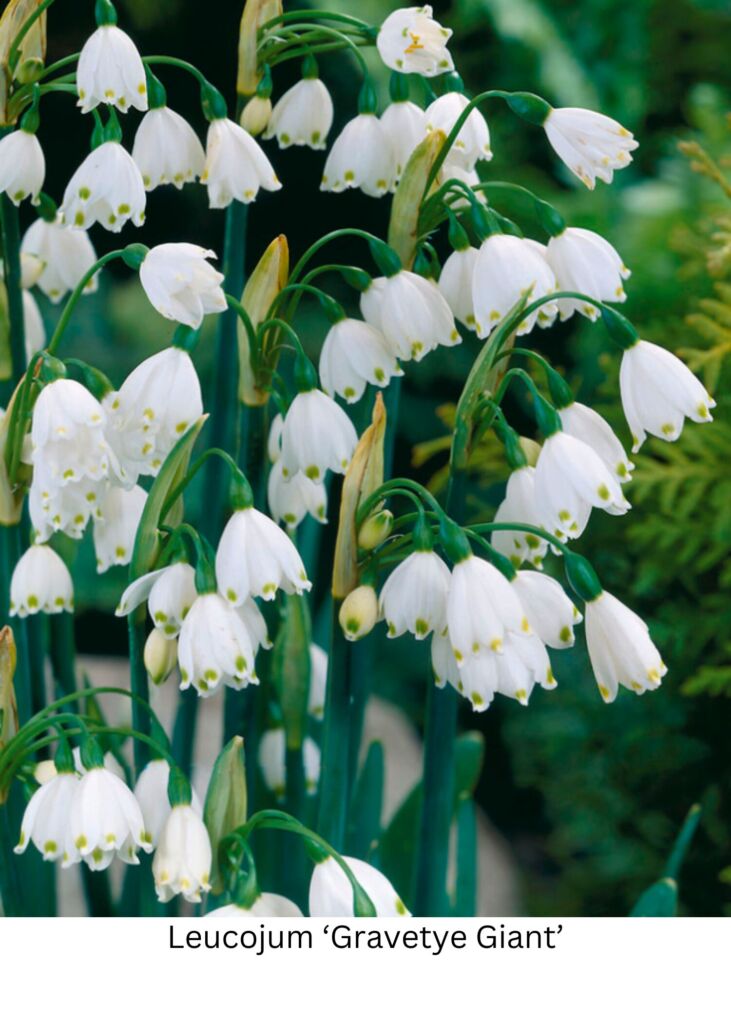
Muscari
Muscari, commonly known as grape hyacinth, is native to Eurasia. They are cherished for their dense clusters of tiny, bell-shaped, cobalt-blue flowers that resemble grape clusters. Blooming in early to mid-spring these hardy, low-maintenance plants are ideal for borders, rock gardens, and naturalizing in lawns, providing a vibrant splash of color in spring gardens.
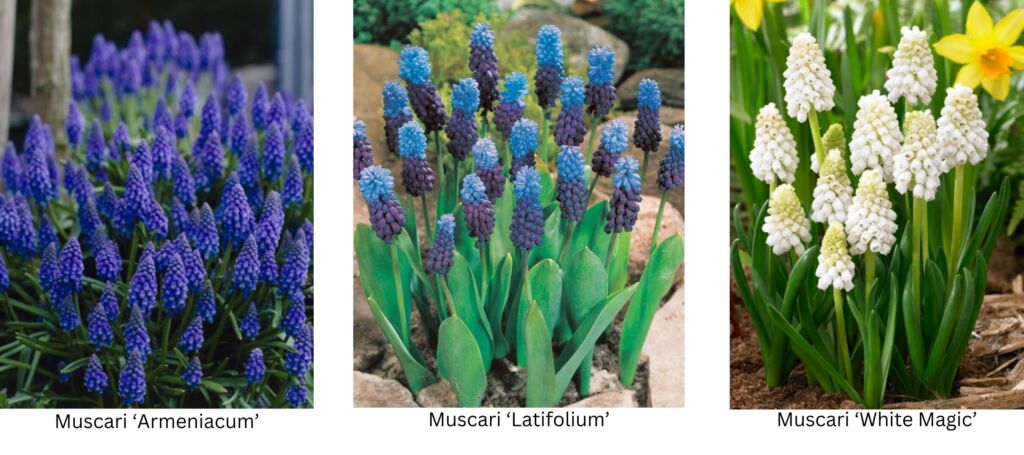
Puschkinia
Puschkinia, commonly known as squill, is a charming spring-blooming bulb. Native to the Caucasus and the Middle East, it features clusters of pale blue to white star-shaped flowers with distinctive blue stripes. Blooming in early spring, Puschkinia is ideal for rock gardens, borders, and naturalizing in lawns, it adds a delicate, early-season beauty to any garden setting.
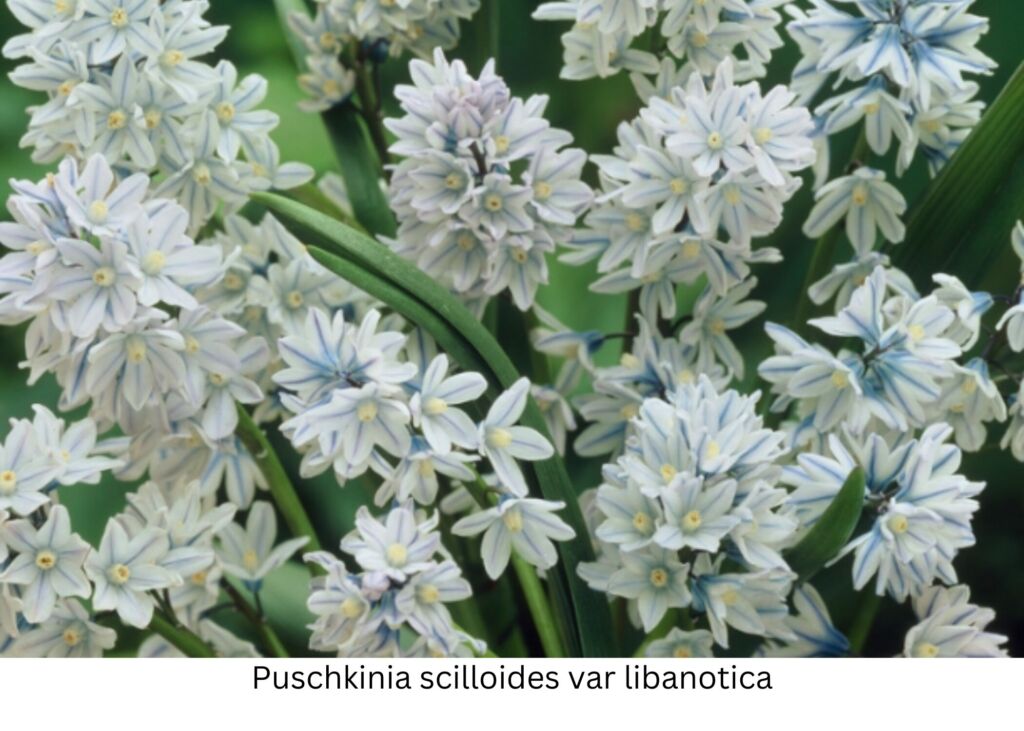
Scilla
Scilla, commonly known as squill, is native to Europe, Asia, and Africa. These plants are celebrated for their bell-shaped or star-like flowers in shades of blue, purple, pink, or white. Blooming in early spring, Scilla is ideal for rock gardens, woodland settings, and naturalizing in lawns, Scilla brings vibrant, early-season color and charm to gardens.
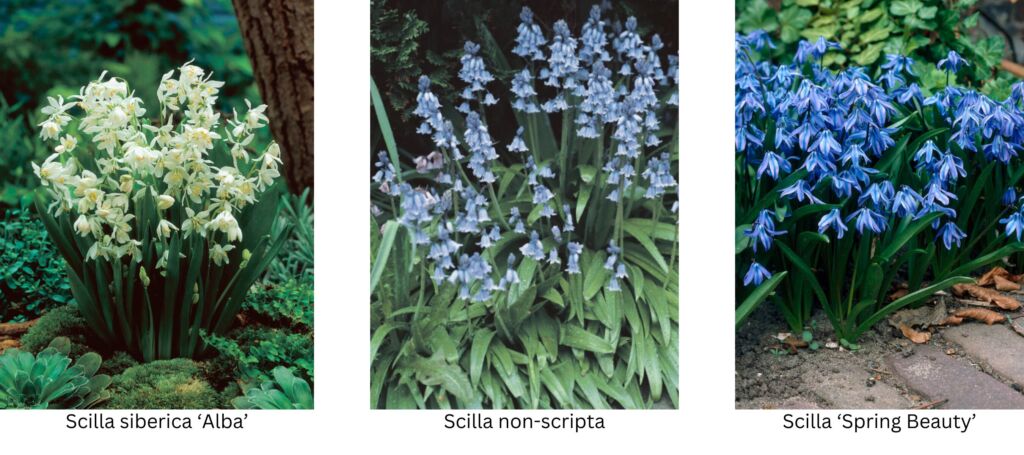
As always, reach out to us if you have any questions,….. or to place an order!

